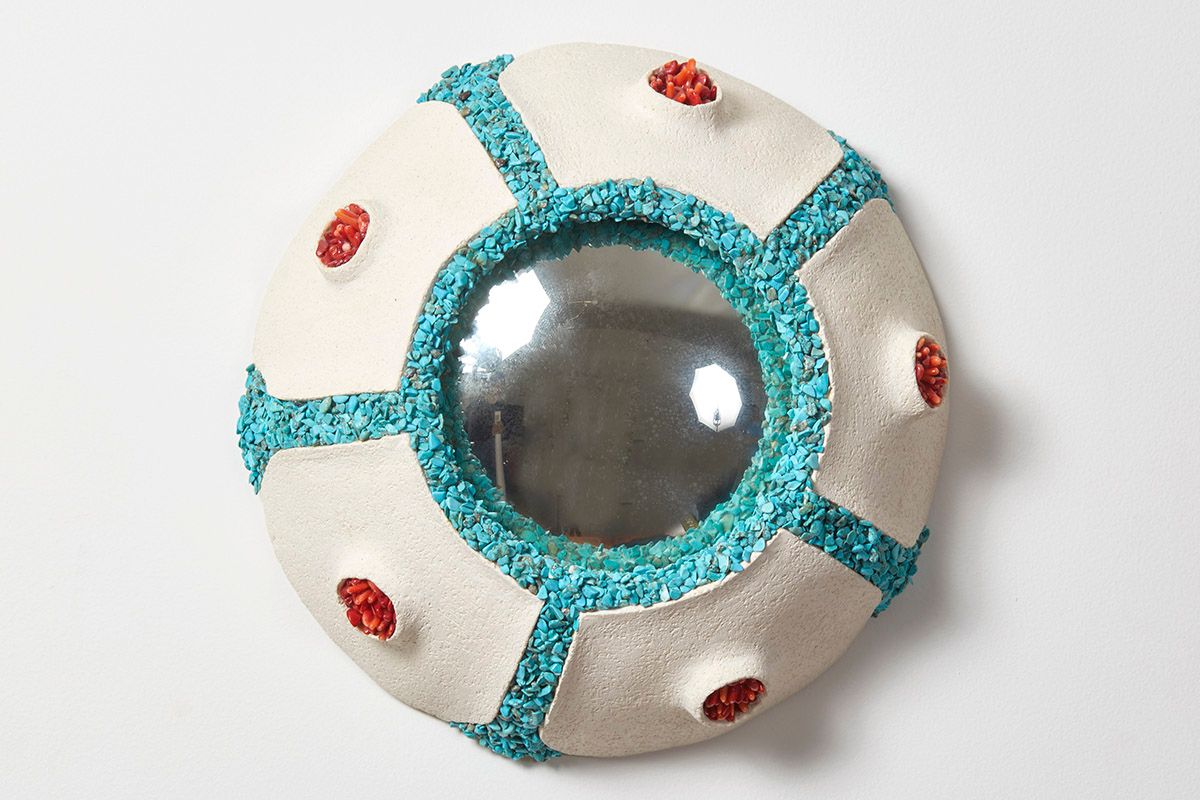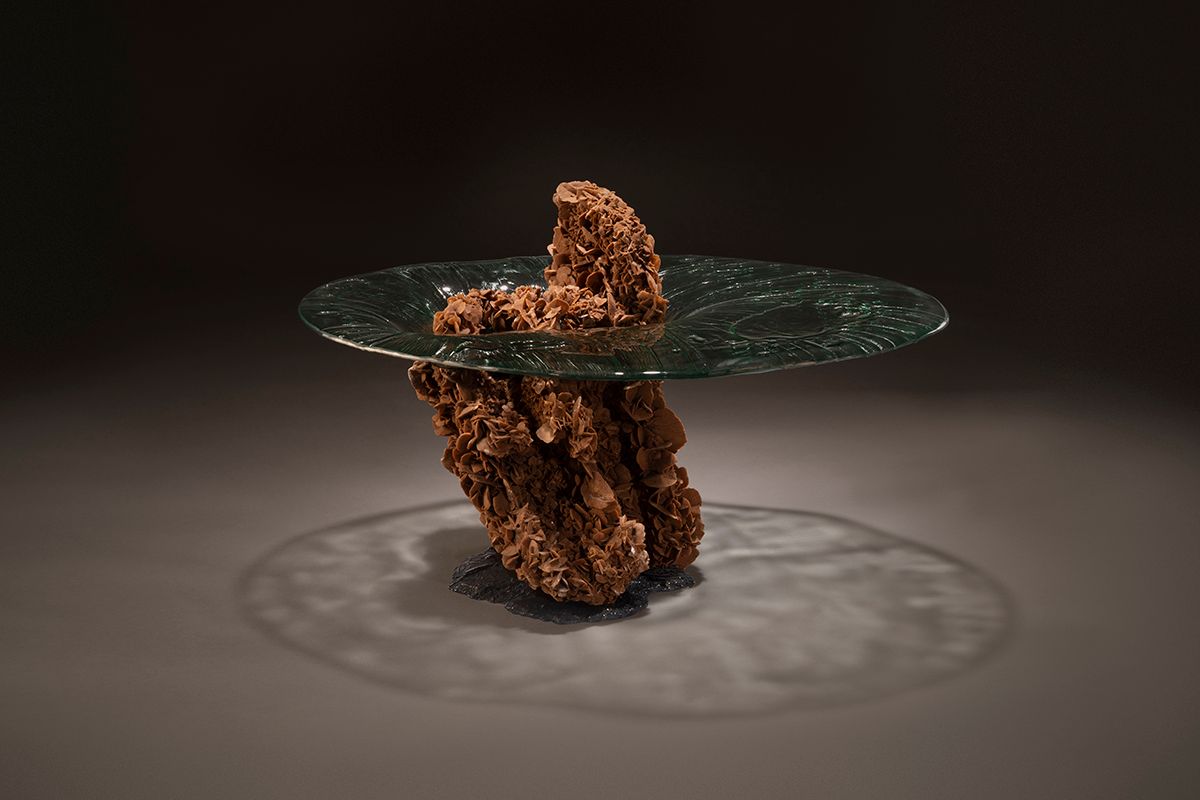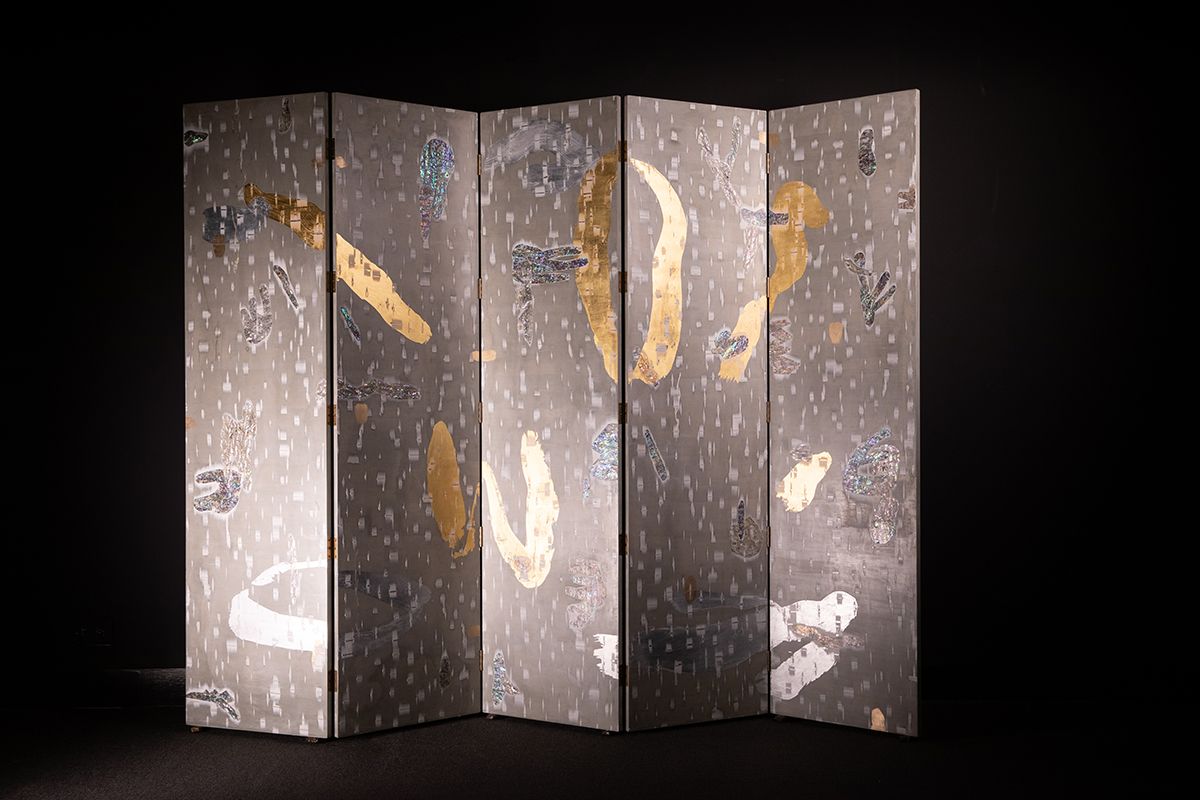
Precious and semiprecious stones have been used to decorate objects and furniture since 2500 BCE, when natives of Kerma (in the Sudan) created inlays of glazed quartzite. Other forms of this art flourished in the pietre dure work of 16th-century Florence, parchin kari of India in the 16th and 17th centuries, and on through Belgian modernism of the 1960s and ’70s, most notably in the inlaid furniture of Ado Chale, 94—whose studio is still going strong. Contemporary furniture designers are using stones in traditional inlay, as well as entirely bejeweled surfaces and hand-applied to wallcoverings. There’s an added bonus for those who believe in healing and protective properties of precious minerals and stones.

Baker Furniture enlists the decorative possibilities of pyrite, agate, and white quartz in its Baker Luxe collection. The Kira Credenza uses thin veneer of the latter to cover the face of its white-lacquered form, which sits on brass-wrapped legs. In the Agate Cocktail Table, ribbons of agate slice dramatically through the rectangular white coffee table, forming a zigzagging pattern. The Remi Spot Table features pyrite, a metallic colored crystal also called fool’s gold, which wraps a barrel-shaped side table trimmed with hand-applied brass sheets. bakerfurniture.com

Walking into Maison Rapin, a gallery on the Quai Voltaire in Paris’s 7th arrondissement, is like happening upon a treasure cave from an Indiana Jones film. There, owner Phillipe Rapin sells meubles bijoux, furniture and furnishings encrusted in turquoise, jade, amber, tiger’s eye, pyrite, and other exquisite stones. He first came upon this work in Hong Kong, where Kam Tin had made a few pieces but ceased production in the 1970s. Rapin purchased the brand and began designing and fabricating his own single- or limited-edition furnishings at his workshop in Germany. He exhibits his collections at the gallery as well as fine furniture and art shows around the world. maison-rapin.com

Until 2002, Régis de Saintdo worked with Mattia Bonetti and Élisabeth Garouste, modeling elements of their eccentric furniture designs in clay and foam, then shepherding designs through the manufacturing process. After they split up, he established his own eponymous company in Paris, for which he designs and makes jewelry, lighting, and mirrors of ceramic that are accented with hundreds of pebbles of lapis lazuli, turquoise, howlite, rose quartz, amber, coral, and amethyst. Designs are thoroughly customizable and take about two months to produce. regisdesaintdo.com

Out of Studio Greytak in Missoula, Montana, founder John Greytak constantly reviews minerals from his collection with his art department until inspiration strikes. Each year he produces unique pieces of furniture, objects, and jewelry in collaboration with artisans (about 90 percent of them within 15 or 20 miles). For the Impact table, Greytak thought about “meteors flying through the sky and impacting the planet.” Out of this came a slumped glass tabletop pierced through by a stunning piece of desert rose gypsum, as if a meteor had crashed to Earth and plunged into the ocean. studiogreytak.com

After studying philosophy and painting at the Sorbonne in Paris, San Francisco Art Institute, and the School of the Museum of Fine Arts Boston, Yolande Milan Batteau made her home in New York. She founded Callidus Guild, an acclaimed wallcoverings firm. But through Bernd Goeckler gallery in New York, she takes commissions for precious custom surface treatments, some of which incorporate paper-thin sheets of iridescent abalone shell. This Asian lacquerware technique has been practiced for centuries in China, Korea, Japan, India, and Thailand, then continued through Art Deco and early Modernism. Here, however, Batteau applies it to walls and creates paintings with it, setting the shells into marble plaster, a new take she describes as “Meiji Japan meets Carlo Scarpa.” berndgoeckler.com

In the 1950s, Ado Chale—born Adolphe Pelsener in Belgium in 1928—discovered mineralogy. One could say it “rocked his world.” Opening up a gallery in 1962 that mainly sold cement tabletops embedded with marcasite from the foot of the northern French cliffs, he soon broadened his material palette. Fossilized redwood, malachite, chalcedony agate, carnelian, rhodochrosite, lapis lazuli, jade, hematite, tiger’s eye, turquoise, and amethyst all soon appeared, sliced and diamond-polished, then suspended in resin tabletops and other objects. In short order he was favored by the Court of Belgium and commissioned to design royal gifts for, among others, the Prince of Wales and Diana Spencer, President Pompidou, and Queen Beatrix of The Netherlands. adochale.com